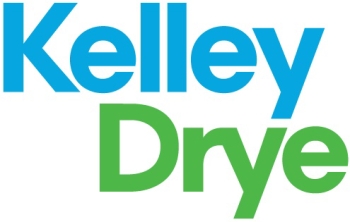Yesterday, a federal jury in Delaware concluded that ZTE’s accused 4G mobile devices did not infringe InterDigital’s U.S. Patent No. 7,941,151 (“the ‘151 Patent”). This jury verdict comes a little less than six months after a different jury concluded that ZTE’s accused 4G mobile devices infringe three separate patents asserted by InterDigital in the case.
Background. In its Amended Complaint, InterDigital alleged that ZTE was infringing four of its patents. With respect to the ‘151 Patent. InterDigital alleged that ZTE was infringing it by “manufacturing, using, importing, offering for sale, and/or selling wireless devices with 4G capabilities.” More specifically, InterDigital alleged that
The accused ZTE products are specifically designed to be used in at least 4G wireless communication systems. Specifically, the accused ZTE products identified by InterDigital to date that are designed to be used in a 4G wireless communications system are configured to comply with [3gPP’s] LTE (Long Term Evolution) standard. Because the accused products are specifically designed to so operate, they have no substantial non-infringing uses.
ZTE asserted a number of FRAND-related affirmative defenses and counterclaims in the litigation. The court subsequently dismissed the FRAND-related counterclaims and bifurcated the infringement liability issues from the FRAND-related affirmative defenses.
In late October, a jury found that ZTE infringed the three other patents asserted by InterDigital and also rejected ZTE’s invalidity defenses. Thereafter, and as we previously reported, Judge Andrews entered an order allowing InterDigital and ZTE to proceed with FRAND and damages discovery under the assumption that ZTE would be found to infringe InterDigital’s ‘151 Patent. Specifically, the order provided as follows:
FRAND/damages discovery may begin immediately. It is going to have to be done, and the parties should do it (as they normally would) on the assumption that ZTE will be found to have infringed the ‘151 patent. It does not need to be coordinated with any similar discovery in the Nokia case. The parties should include the scheduling for this discovery in the written proposed scheduling order submitted before the above-mentioned scheduling conference.
The infringement trial for the ‘151 Patent occured on Monday and Tuesday of this week. Yesterday, the jury found that ZTE did not infringe the ‘151 Patent.
Next Steps. According to the agreed-to Scheduling Order entered by the court, the parties will now complete FRAND and damages-related discovery and prepare for a damages trial with respect to the three InterDigital patents the first jury found ZTE to infringe last Fall. The following schedule will apply:
August 21, 2015: Completion of fact discovery related to FRAND/damages;
September 18, 2015: Disclosure of expert testimony for party with burden of proof;
October 16, 2015: Supplemental/rebuttal expert disclosure;
November 9, 2015: Reply expert reports from party with burden of proof;
December 4, 2015: Completion of expert discovery;
December 8, 2015: Joint letter outlining any issues the parties believe must be addressed at the status conference;
December 15, 2015: Status conference;
December 29, 2015: Dispositive motions and deadline to object to expert testimony;
March 21, 2016: ZTE target trial date; and
April 11, 2016: Microsoft Mobile Oy (MMO) (another defendant in the case) target trial date


